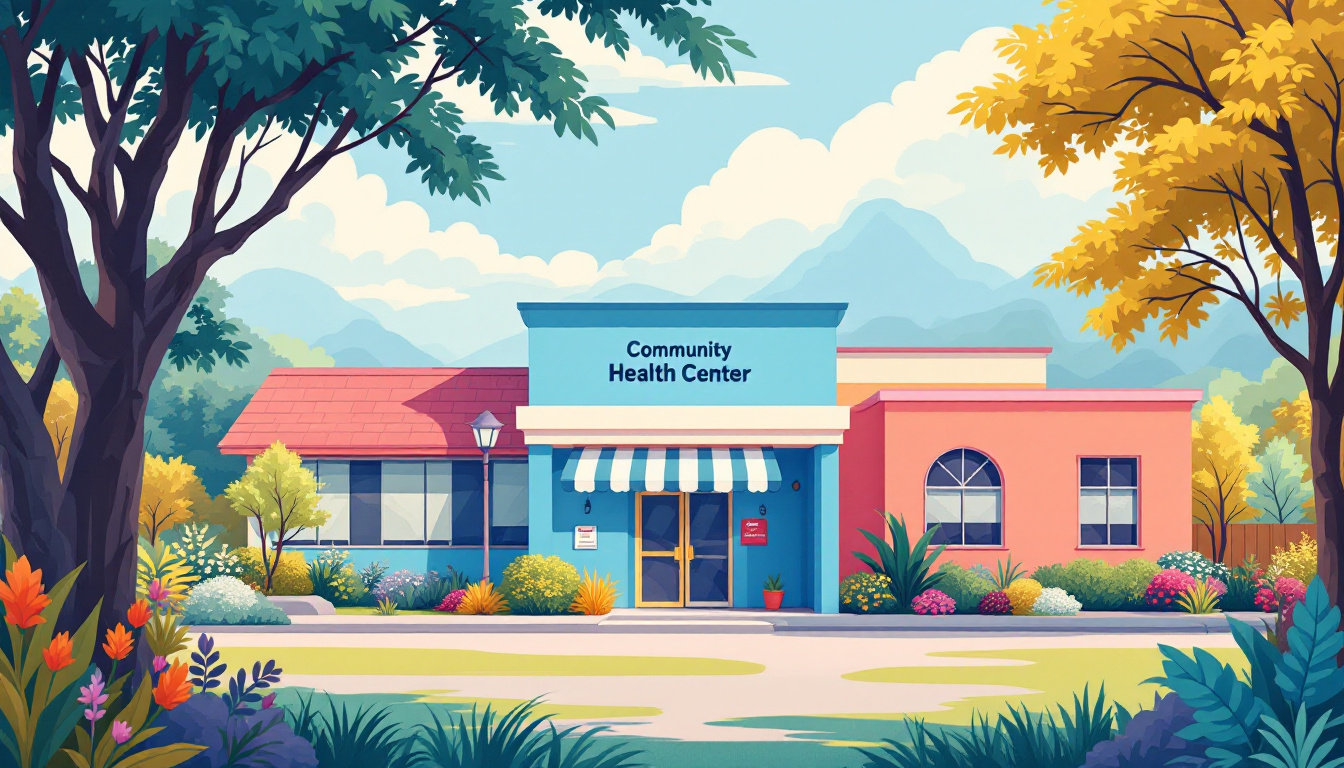How to manage multiple healthcare appointments effectively
April 2, 2025
Efficient Strategies for Managing Healthcare Appointments


Navigating Complex Healthcare Scheduling
Managing multiple healthcare appointments effectively requires strategic planning and the adoption of various scheduling methodologies. With increasing patient demand, particularly for specialists, healthcare professionals are continuously seeking ways to enhance scheduling efficiency while maintaining quality care. This article explores practical strategies, tools, and innovative scheduling techniques to optimize healthcare appointment management and improve patient satisfaction.
Streamlining Scheduling with Innovative Methods

Wave scheduling for flexibility
Wave scheduling is an innovative approach that organizes patient appointments in overlapping groups. This method creates a flexible timetable accommodating varying appointment lengths. By assigning patients to arrive in waves, healthcare providers can better manage their time and reduce stress while minimizing scheduling conflicts.
This strategy allows for real-time adjustments without disrupting the entire day’s schedule. However, it’s essential to manage patient expectations as this could potentially lead to longer wait times for some.
Buffer times to manage patient flow
Incorporating buffer times into the daily schedule is crucial for effective patient management. These unstructured periods allow practices greater flexibility to handle unexpected surges or emergencies. For instance, setting aside 15-30 minutes between appointments can help catch up on any delays while ensuring that healthcare providers maintain their focus without feeling rushed.
Integrating telemedicine
The integration of telemedicine into scheduling practices offers significant flexibility for both patients and providers. By designing a system that easily accommodates virtual visits alongside traditional in-person appointments, healthcare facilities can optimize their workflow and meet diverse patient needs.
Telehealth options not only enhance patient access to care but also alleviate pressure during peak hours, creating a seamless blend of both healthcare delivery methods. This balance strengthens patient satisfaction by providing timely services tailored to individual circumstances.
| Scheduling Method | Description | Benefits |
|---|---|---|
| Wave Scheduling | Overlapping patient arrivals in groups | Flexibility and reduced stress for providers |
| Buffer Times | Reserved periods between appointments | Manages delays and unexpected patient needs |
| Telemedicine Integration | Scheduling virtual visits with in-person appointments | Enhances access and efficiency in patient care |
By embracing these innovative scheduling techniques, healthcare practices can improve the patient experience while creating a more efficient operational flow.
Enhancing Patient Experience and Reducing No-Shows

How do you schedule and manage appointments effectively?
To schedule and manage appointments effectively, it is essential to implement various strategies that streamline the process while enhancing patient satisfaction. Begin by prioritizing automated reminders. By sending out automated texts or emails, practices can significantly reduce no-show rates. A timely reminder ensures patients don’t forget their appointments, ultimately improving adherence to scheduled visits.
Next, consider patient self-scheduling options. Allowing patients to book, modify, or cancel their appointments through an online portal offers them the flexibility that modern consumers expect. This can reduce the administrative load on staff and capture more appointments that might otherwise be lost due to phone call barriers.
Implement central scheduling systems to reduce confusion and mismanagement of appointments. Centralized systems allow better control for practices with multiple locations or providers, minimizing the risks of double bookings and administrative errors. Utilizing scheduling software that integrates with patient records can enhance operational efficiency, streamline processes, and alleviate some of the stress on healthcare staff.
By incorporating these strategies, practices can not only manage appointments more effectively but also provide a smooth experience for patients, reducing no-show rates and boosting overall satisfaction. With the right tools and techniques, scheduling can become a seamless part of the patient care experience.
Technology and Tools for Improved Scheduling

How can patient scheduling be improved?
Improving patient scheduling involves implementing several technological strategies that enhance convenience and efficiency. Patient self-scheduling through online portals enables individuals to book appointments independently. This method alleviates administrative burdens and captures more appointments that might be missed if patients had to make phone calls.
Integrating automated scheduling tools with existing calendars optimizes appointment management by ensuring that all scheduling considers staff availability. This helps to avoid conflicts and streamline the booking process.
Another significant improvement comes from the use of automated appointment reminders. These reminders can be sent via text or email and have been shown to reduce no-show rates by as much as 41%. This reduces gaps in schedules, enhances patient adherence, and promotes continuous care.
Furthermore, effective management of cancellations is essential. Many lost appointments lead to financial losses for healthcare practices, so developing an automated waitlist system can help fill those last-minute slots quickly.
It is also crucial to comply with regulations such as HIPAA while using these tools to ensure patient privacy and information security. With the right blend of technology and thoughtful scheduling practices, healthcare providers can create a more efficient, patient-friendly appointment experience.
Optimizing Clinic Management Processes

What factors must be considered when scheduling appointments in healthcare?
When it comes to scheduling appointments in healthcare, multiple factors come into play to ensure efficient management processes. Patient needs and preferences are at the forefront; these include their medical history and urgency of care. Understanding these aspects helps in tailoring appointment timings to better suit each patient.
The availability of equipment and personnel is also essential. Adequate resources must be on hand to meet patient demands and ensure effective treatment. Furthermore, it’s crucial to consider the provider's capacity, which includes their workload and specialty. Aligning these factors ensures that the healthcare provider can deliver quality care without feeling overwhelmed.
External considerations like insurance coverage and patient demographics play a significant role, too. Different patients may have varied scheduling needs based on these parameters. Clear communication and confirmation processes can significantly minimize no-shows, enhancing the overall patient scheduling experience.
Resource optimization in clinic scheduling practices
Optimizing resources is integral to efficient clinic management. Implementing strategies such as wave scheduling, which allows patients to arrive in groups, helps to prevent scheduling conflicts and reduce waiting times. Moreover, utilizing two or three exam rooms can enable providers to handle administrative tasks simultaneously while attending to patients, thus maximizing workflow.
Incorporating buffer times in daily schedules can also be beneficial. This flexibility accommodates unexpected surges in patient visits and allows for same-day appointments. When appointments are prioritized based on the need for immediate attention, patient needs are addressed in a more timely manner, enhancing their overall experience.
Managing provider workload and efficient use of space
A critical step in managing provider workload involves automating appointment reminders which can lead to fewer no-shows. This not only helps in maintaining a full schedule but also alleviates stress on healthcare providers. By adopting central scheduling systems, clinics can significantly reduce the complexity involved in handling appointments across multiple locations.
Moreover, efficient use of space can be facilitated through practices like cluster scheduling, which groups patients with similar needs together on specific days. This approach makes it easier to allocate time and space efficiently, optimizing the appointment process. Finally, the use of appointment scheduling software can streamline operations, enabling clinics to effectively manage patient flow and reduce administrative burdens, thereby creating a more organized healthcare environment.
| Scheduling Strategy | Description | Benefits |
|---|---|---|
| Wave Scheduling | Patients come in waves for appointments. | Improves flow but may increase wait times for some. |
| Modified Wave Scheduling | Flexibility with double-booked patients early in the hour. | Better management of delays. |
| Central Scheduling | All appointments managed through a central system. | Enhances control and reduces confusion. |
| Cluster Scheduling | Grouping patients with similar needs. | Maximizes efficiency on appointment days. |
The Role of Outsourced Scheduling Services

Outsourcing Benefits
Outsourced medical scheduling offers numerous advantages for healthcare facilities. By delegating appointment management, practices can focus more on patient care rather than the administrative burdens associated with scheduling. This approach improves the efficiency of workflows and maximizes patient engagement.
Technology in Outsourced Services
Advanced scheduling software utilized by outsourced services automates appointment reminders, tracks patient preferences, and manages conflicts effectively. This technology not only enhances scheduling accuracy but also reduces no-show rates, ultimately improving patient retention and satisfaction.
Reducing Administrative Burdens
By implementing outsourced scheduling solutions, healthcare providers alleviate the workload on their staff. This reduction in administrative duties contributes to a smoother operation, allowing healthcare professionals to concentrate more on delivering high-quality care. Moreover, outsourced services ensure that all patient interactions adhere to industry regulations, enhancing the overall trust and reliability of the scheduling system.
| Feature | Benefits | Impact on Practice |
|---|---|---|
| Automated reminders | Reduces no-shows | Ensures better patient attendance |
| Advanced scheduling software | Increases efficiency | Frees staff for patient care |
| Compliance with regulations | Protects patient info | Builds trust and reliability |
Scheduling Models: Wave and Time-Slot Methods
What scheduling method assigns specific appointment times to each patient?
The scheduling method that assigns specific appointment times to each patient is known as time-slot scheduling. This technique allows patients to choose from a list of available time slots, ensuring that they have exclusive access to the selected time. By doing so, it aids in managing patient flow and setting clear expectations for both patients and healthcare providers. Time-slot scheduling is widely used in hospitals and clinics, making it a common approach in the healthcare sector. Unlike methods such as wave scheduling, which groups patients together, time-slot scheduling focuses on individual appointments at designated times.
What are the advantages of wave scheduling?
Wave scheduling varies from time-slot scheduling by organizing patient appointments in groups or "waves." This method allows for flexibility in appointment timings, accommodating varying lengths of appointments. Patients may arrive simultaneously in "waves," improving overall flow. While it can lead to longer wait times for some, this approach helps prevent scheduling conflicts and reduces stress on healthcare providers. It may also be effective during busier periods, allowing practices to manage multiple patients together.
How does cluster scheduling optimize patient flow?
Cluster scheduling is another beneficial method that groups patients with similar needs together, helping to maximize efficiency on appointment days. This strategy can significantly improve workflow by reducing transition times between different types of appointments. For instance, scheduling patients for routine checks back-to-back minimizes administrative tasks and utilizes exam rooms more effectively, leading to enhanced patient satisfaction and smoother operations.
Buffer Times and Patient Flow Management
Managing delays and emergencies
To create a responsive healthcare environment, integrating buffer times into daily scheduling is essential. These periods, set aside without direct appointments, provide flexibility to accommodate delays or emergencies. When unexpected situations arise, having buffer time allows practices to maintain workflow while ensuring patients are still seen without excessive wait times.
Buffer time planning
When planning buffer times, consider the typical duration of common appointment types. Here are some effective strategies:
- Allocate specific buffer periods within each physician's schedule, primarily during peak hours or when a higher number of patients are expected.
- Adjust the buffer duration based on appointment complexity—more complex visits may require longer buffers.
Improving patient flow
Effective scheduling with deliberate buffer times significantly enhances patient flow. By managing the unexpected well, practices can:
- Reduce waiting times for all patients.
- Increase patient satisfaction, leading to better retention rates.
- Maintain a steady pace for providers, lowering stress levels during busy periods.
Conclusion: Achieving Balanced and Effective Appointment Scheduling
Effectively managing multiple healthcare appointments relies on a combination of structured scheduling models, technological advancements, and strategic planning. By incorporating flexible methods such as wave and time-slot scheduling, utilizing tools like automated reminders and self-scheduling portals, and considering outsourcing options, healthcare practices can significantly enhance appointment management. These strategies not only improve patient experience but also alleviate administrative burdens, leading to a more efficient and patient-centered healthcare environment.
References
- 7 steps to improve scheduling in your outpatient practice
- 6 Ways to Improve Patient Scheduling - Solutionreach
- Appointment Scheduling Best Practices for Healthcare Admins
- Strategies to Maximize Patient Appointment Scheduling - InteliChart
- Medical Scheduling | Multiple Appointments and Providers
- Building from Best Practices - Transforming Health Care Scheduling ...
- How to Optimize Patient Scheduling for Efficient Billing
- Three Ways to Schedule Patients Effectively in Your Practice - Sycle
























































































.jpeg)











































































































































































































.avif)























































.jpeg)

































































.jpeg)














.jpg)









































.jpeg)









































































.avif)




.avif)

















































.avif)









































































































































































